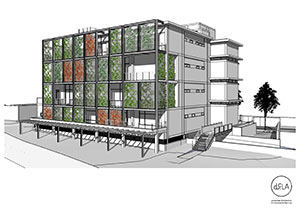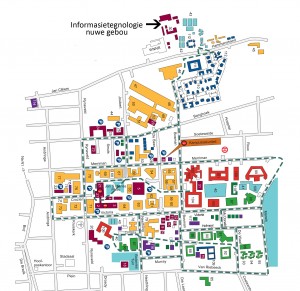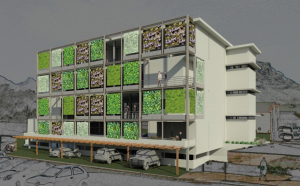 Since the 80s the Information Technology department has been located in a section of the Engineering faculty, just off Banhoekweg. Some of us have grown old with the building and became part of the furniture over time.
Since the 80s the Information Technology department has been located in a section of the Engineering faculty, just off Banhoekweg. Some of us have grown old with the building and became part of the furniture over time.
We are happy, ecstatic and enthusiastic to announce that this will change over the next two months. Yes, we are uprooting all our staff and in a mission of epic proportions relocating to a brand-new building where we will be rubbing shoulders with our new neighbours, Facilities Management. You can read more about our new, green home here and also in September’s issue of Kampusnuus.
As exciting as this new development is, there are also some logistic wrinkles that need ironing. Once they are ironed out, however, we’ll be providing a more convenient, streamlined service to everyone on campus.
Since we will now be even further away from central campus, the IT HUB, our current student centre, will become an additional service point. No longer do you have to lug that massive PC box across campus to the IT building and sprain an elbow doing so. You can now get assistance for your personal devices, as well as asset number PC (SU equipment) at the IT HUB. It works as follows:
SU equipment (with asset numbers and warranties)
Staff are welcome to drop their equipment off at the IT HUB if it suits them better. Just keep in mind this might cause a delay in service of at least a day. These include laptops and desktop PCs where a warranty is concerned.
All equipment will still be serviced at the main IT building, but minor adjustments, for example registering a device on the network, passwords, etc. can be done at the IT HUB.
Personal devices (no asset number or warranty)
Staff’s personal devices will be handled at the IT HUB or IT Workshop at a nominal fee. For a fee, staff can register 5 personal devices (e.g. smart phones, tablets and laptops) on the network. These devices will receive limited support at the IT HUB.
 We will still be at your disposal through all the other channels and you can contact our service desk here:
We will still be at your disposal through all the other channels and you can contact our service desk here:
Tel: 021-808 4367
Skype: ITStellenUni
E-mail: helpinfo@sun.ac.za (for general enquiries) or help@sun.ac.za (to log an error)
Twitter: @itstellenuni
Full instructions on how to log an error is available here. Please supply the correct information otherwise the call will not register on the system.
All our services are listed on our Service Catalogue and if you are brave enough, you can consult our Self-help wiki.



 The IT Division’s e-waste programme continues to quietly do the right thing behind the scenes.
The IT Division’s e-waste programme continues to quietly do the right thing behind the scenes. Chicken or beef? Just imagine not exposing yourself to dodgy airplane meals and lost luggage anymore? Nowadays there’s really little need to fly thousands of kilometeres for an one hour meeting. More and more businesses are starting to make use of virtual meetings to save money and to lighten their carbon footprint.
Chicken or beef? Just imagine not exposing yourself to dodgy airplane meals and lost luggage anymore? Nowadays there’s really little need to fly thousands of kilometeres for an one hour meeting. More and more businesses are starting to make use of virtual meetings to save money and to lighten their carbon footprint.